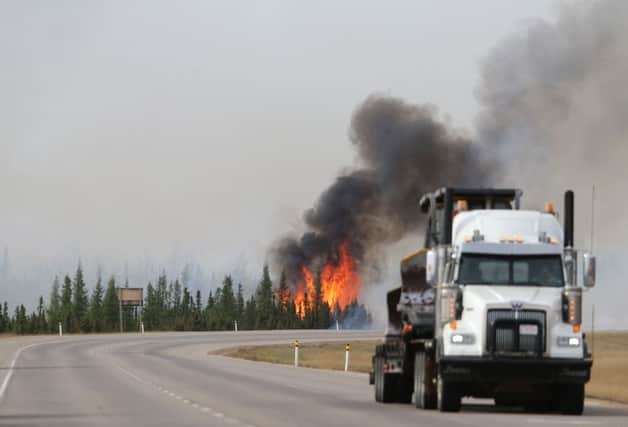Bill Jamieson: Wildfire ensues from a monetary policy spark


An accumulation of leaves and pine straw together with dry conditions made for an awesome conflagration – a natural disaster just waiting for a spark.
It doesn’t take a leap of the imagination to see the parallels in financial markets: periods of seeming calm and serenity brought to a sudden and fiery end. For John Wyn-Evans, head of investment strategy at wealth manager Investec, these conflagrations have informed his latest briefing note to clients. He was in South Africa when fires were raging across the Cape Peninsula, inspiring him to write about the natural cycle of burning and new growth as well as the evolution of the insurance industry. Two weeks ago he was in Canada when the fires around Fort McMurray were burning out of control.
Advertisement
Hide AdAdvertisement
Hide AdThis may prompt nervous Investec clients to ask which country he plans to visit next. But he raises a sage point about market combustibility: “One could say it was a catastrophe waiting to happen – it just needed a catalyst, in this case a spark. It is as yet unclear whether it was provided by nature or humans. Without this spark the forests might well have remained unscathed for years, but the apparent equilibrium of nature would have been illusory. Financial markets display many of the same characteristics.”
For investors, the analogy will ring loud bells. Market behaviour often seems to conform to long periods of uneventful growth brought to a dramatic end by ferocious, wealth-destroying fires. Barely has the acrid smell of burning filled our nostrils and the hoses made ready than portfolio values have disappeared in flames.
It’s a comparison that also prompts many questions. How do we know when the ground underfoot is dangerously tinder dry? What is the spark that sets off the conflagration? And what prudent action can we take to mitigate the fire damage?
Wyn-Evans is one of the UK market’s most engaging commentators and has given numerous talks to Investec clients in Glasgow and Edinburgh. He is a wary observer, but not one of the apocalyptic forest forecasters constantly warning of market catastrophe ahead.
Certainly, there is no shortage of “spark” events – an unpredicted geopolitical shock, a change in tax policy by governments, or a central bank change in interest rates or monetary policy which triggers unintended consequences.
The prime candidates, he writes, are monetary policy and politics. And for the past 12 months movements on Wall Street and other major western markets have been in response to fluctuating expectations on the timing – and the extent – of a rise in interest rates.
Last week was a prime example: a volatile five days dominated by a significant shift in expectations about a rise in US interest rates – with hawkish comments from Federal Reserve officials that a rate rise this summer remained a distinct possibility. The probability of a rise has risen from 4 cent to 30 per cent.
Then there is the potential spark from geopolitics – for example, a further devaluation of the Chinese yuan in response to trade barriers – akin, says Investec colleague John Haynes, “to financial arson”.
Advertisement
Hide AdAdvertisement
Hide AdThe scary feature of forest fires is that a blaze can soon become self-feeding – the intensity of the heat igniting areas further afield that were not initially at risk. Thus, the sharp fall in oil prices, for example, has piled pressure on highly borrowed oil companies, causing credit spreads to rise across all corporate bond markets. With the financial world still suffering from burns caused by the last financial conflagration, a re-run of the subprime crisis would rekindle fears over bank solvency. So, there you go – Wyn-Evans drily comments: “You can see how these things spread like, well, wildfire.”
However, macabre though it may seem, devastating forest fires can have a “positive” impact. The fires in northern Alberta are in the heart of the country’s oil sands extraction and the disruption to output has contributed to a sharp rise in the oil price – offering the prospect of some relief for our own beleaguered North Sea sector. Analysis by the Conference Board of Canada calculates that the McMurray fires have meant the loss of 1.2 million barrels of oil a day over two weeks.
Combined with news of oil supply outages elsewhere – Venezuela and China in particular – the hit to expected global supply has helped drive the price of Brent crude back up towards $50 a barrel.
It may seem perverse to treat this as a cause for cheer, falls in energy prices being long regarded as economically stimulative. But as central banks have been battling to stave off deflation, the fires may have helped nudge us back towards monetary normality – and less febrile markets.